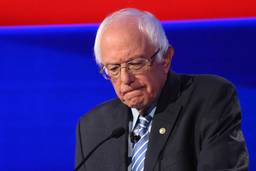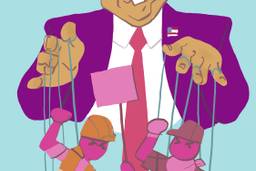As the news media struggle to find equilibrium in an era of increased competition and decreased trust, we have some lessons that defy current conventional wisdom. The most important is that newspapers – yes, old, print-based, non-digital, non-instantaneous, so-1950s newspapers – still matter enormously. The other is that the outlet best equipped to provide instant 24-7 news, the cable channel – and CNN in particular – has become a massive failure, especially under the control of Time-Warner.
Does CNN really have no shame anymore? The day that Britney Spears shaved her head, the story seemed to be in a 6-minute rotation, lest inquiring minds somehow missed this irrelevant flotsam. The following day it was still a top story, CNN reminding us that her head was, yes, indeed still shaved, as if an application of Rogaine and Chem-lawn might have sprouted it back overnight.
Another minor scandal is how much attention CNN paid to the Anna Nicole Smith melodrama, bombarding us with Anna Nicole experts – how does one become an Anna Nicole expert? – while relishing the repeated use of the word “decomposing.” The Project for Excellence in Journalism (PEJ) has begun a news index on its Web site that monitors, in part, how the cable channels fill their news hole: The week of Feb. 4, when debates about U.S. policy in Iraq were 12 percent of the news hole, Anna Nicole filled 10 percent of it. Explained Wolf Blitzer, “That’s the only story we reported for two solid hours … we just couldn’t help ourselves.” By contrast, Anna Nicole was not in the top five stories covered in PEJ’s sample of newspapers. The following week, Anna Nicole continued to dominate the cable talk shows, with the likes of the ever-shrill Nancy Grace gnawing this bone of a story to its meatless end. Is it any wonder that public confidence in the news media continues to decline?
Almost every night, Jon Stewart makes fun of the cable channels, especially CNN. The network was reportedly bombarded by complaints about the wall-to-wall, breast-to-breast Anna Nicole coverage. But the ridicule and complaints seem not to matter: CNN, with a few exceptions here and there, continues down its slope of triviality, superficiality and sensationalism. On the day after the Libby verdict, CNN’s lead story at 9 a.m. was about the Mega Millions Lottery and who might win it. This was followed by advice on how to program your TiVo with your cell phone (hello?), and whether to take an aspirin a day or not. I never thought I’d say anything longing about Ted Turner, but CNN had more integrity when it was his baby.
Meanwhile, amidst all the hand-wringing about the death of newspapers, the Washington Post’s exposé of conditions at Walter Reed Hospital became a major story with legs. The independent press (including blogs) have been reporting about the medical neglect of returning soldiers for years, but the Post’s focus on the alleged gold standard of military hospitals and its sordid details about mouse droppings and “belly up cockroaches” showed that good old fashioned investigative journalism matters. And while post-mortems on the Libby case emphasized the toll it took on the press (not to be underestimated), few emphasized that it was The New York Times’ gutsy publication of Joe Wilson’s op-ed piece that, in fact, ignited this disastrous abuse of power.
The underlying issue here, as Bob McChesney and his organization Free Press note, is that the commercial business model of news organizations demands one thing: the highest possible profits and return on investment. Paula Zahn and others on CNN justified their Anna Nicole glut by saying that ratings had increased (despite survey results in which 71 percent said they were not interested in the story.) Wall Street, which is constantly anthropomorphized into some all-knowing Buddha, currently doesn’t “like” newspapers because their profit margins are no longer between 22 and 29 percent, an outrageously high expectation especially when compared to many other businesses. When proposals are floated to reduce expectations on profit margins back to, say, 10 percent, critics note that Wall Street would revolt, hostile takeovers by non-news types would flourish, and the news would be further destroyed. But can it get any worse?
It is of course a time of flux for the news industry as more people go to the Internet for their news and industry types try to figure out how to profit from that. (The increasingly intrusive ads suggest they’ve made plenty of progress in this area). But with a severely damaged presidency, an oppositional Congress, and a backlog of scandalous underreported stories – from the down-and-dirty about shoddy mortgage practices to the real conditions on the ground in Iraq for U.S. military and Iraqi civilians alike – this could be a great moment for the news media. But if they kowtow too much to the corporate suits, they will further lose their core audience, the one that sustains not only them, but also the ever-tenuous connection between journalism and democracy.
Susan J. Douglas is a professor of communications at the University of Michigan and a senior editor at In These Times. She is the author of In Our Prime: How Older Women Are Reinventing the Road Ahead.









